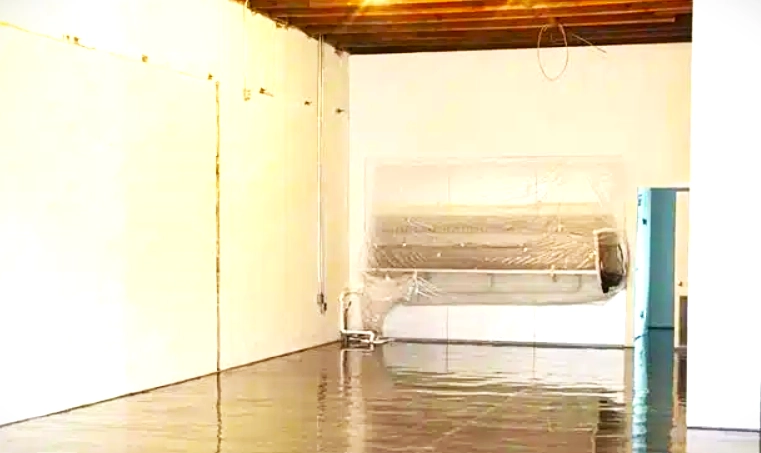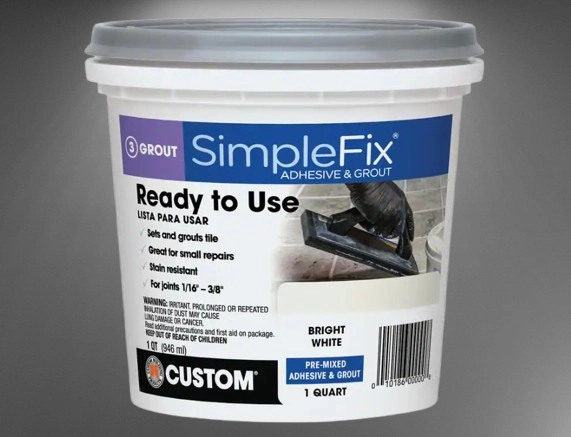Can You Skim Coat Over Asbestos Tiles?

Your home’s tiles are probably asbestos-containing if they were put in around the 1980s or 1970s. Asbestos was the preferred building material a few years ago. But when scientists learned about its health hazards in the 1990s, it was outlawed globally.
Because asbestos has health risks, most homeowners find the idea of having asbestos tiles in their home unsettling.
The best course of action if you think your home may have asbestos tiles is to have this threat securely removed by hiring a reputable construction company.
Since professional asbestos removal can be expensive, many individuals think about skim coats as an option. By covering the asbestos tiles with a skim layer, asbestos dust is kept from floating into the atmosphere.
Can asbestos tile be sealed with a skim coat?
A thin layer of joint compound called a “skim coat” is mostly used to patch damaged drywall or smooth textured walls. It is a popular and reasonably priced home remodeling method for producing a smoother finish.
The skim coat is not appropriate for tiles as a substrate. Nonetheless, there are methods for encouraging adhesion while working with asbestos tiles.
One of the quickest and least expensive ways to seal asbestos tiles is with skim coating. If you’re concerned about the health effects of asbestos dust, it’s advisable to remove them.
Applying a layer of skim coat ought to work. Experts advise taping seams to guarantee adequate asbestos tile sealing prior to beginning such a project.
How Can Asbestos Tile Be Covered with Skim Coat?
The procedure of applying a skim coating on asbestos tiles is rather simple. However, working in a big space can be a little exhausting. This is how asbestos tile can be covered with a skim coat:
- Step 1: Clean the tiles.
Taking into account that tiles are not a good substrate for a skim coat, asbestos or not. You must be meticulous at every stage.
Start by using a mop to clean the tiles. Scrubbing them could disturb the asbestos, so avoid doing so. Before moving on to the next stage, give the tiles adequate time to dry.
- Step 2: Apply a bonding primer
There would be no need for priming if you were skim-coating over drywall because the adhesion would happen on its own.
The degree of adhesion between the asbestos tiles and the skim coat, however, may be impacted by their smooth surface.
You can choose from a variety of bonding primers. Make sure to cover every asbestos tile from wall to wall by applying it evenly.
- Step 3: Mixing the Skim Coat
You can use joint compound or something much more durable, like self-leveling concrete, for the skim coat product. Make sure you adhere to the manufacturer’s instructions for the skim coat product you choose.
- Step 4: Apply the Initial Coat
Apply the first coat according to the type of skim coat you are using, making sure it is uniform.
Make smaller parts if you are working on a large area. You can also work with a second pair of hands. An good tool for smoothing down the initial skim coat is a trowel.
- Step 5: Apply the second coat
To make sure the asbestos tiles are sufficiently sealed, you might apply a second coat. If you utilize a skim coat, such as self-leveling concrete, this is not required.
You can live comfortably in that house knowing that you are safe once the skim coat has dried and sealed your asbestos tiles.
Because gaps might serve as asbestos escape routes, the skim coat needs to be monitored frequently.
Why is it crucial to test tiles for asbestos before applying a skim coating?
The tiles in your house may not contain asbestos just because it was constructed in the 1980s. You won’t require a skim coat if the tiles are asbestos-free. You have to check the tiles for asbestos before you do anything else.
You can accomplish this in two ways. You can test the tiles yourself by purchasing an asbestos test kit online. As an alternative, you can submit a sample for an asbestos test to a laboratory. The latter is a more accurate choice.
Only a test can guarantee that the tiles are asbestos-free. Assumptions can be a major waste of resources, money, and time.
What Advantages Do Skim Coating Asbestos Tiles Offer?
The purpose of skim coating asbestos tiles is to cover this dangerous substance with a sealing layer. Asbestos tiles can be DIY-encapsulated using a skim coat. This approach is well-liked because of its speed and affordability.
It’s crucial to remember that applying a skim coating over asbestos tiles is only a short-term fix. If asbestos is not removed from your home, it will remain there.
Are Tiles Made of Asbestos Dangerous?
Regarding the risks of asbestos tiles in homes, there are many divergent views on the internet. Nevertheless, asbestos won’t hurt you if it’s not broken or cracked, like tiles are. The prospect of having such material on their property is not appealing to many homeowners.
You will be relieved to learn, though, that asbestos can be found in tiles in trace amounts—no more than 10%.
Furthermore, asbestos doesn’t merely appear in the air by itself. The tile needs to be damaged, chipped, or shattered. Keep your distance from any damaged tiles.
Over the asbestos tile, a skim coat provides an additional layer of protection. For those without the funds for expert asbestos tile removal, it’s a great substitute.
It is risky to have asbestos in your home since it can cause major health problems.
Will Asbestos Tiles Gain Weight with a Skim Coat?
When thinking about applying a skim coat over asbestos tiles, it’s crucial to understand how this new product may affect the structural integrity of your house.
Often, a skim coat layer is too thin. Consequently, the asbestos tiles won’t be greatly impacted by the additional weight.
What is the expected lifespan of skim coating on asbestos tiles?
A skim coat can last anywhere from ten to twenty-five years. The skim coat has a decades-long lifespan when applied properly.
However, tiles aren’t a good substrate for the skim coat, which is the issue. It won’t last that long as a result. You need to come up with a long-term solution because the skim coat serves as a sealant for the asbestos tiles.
The asbestos tiles may become exposed if the skim layer cracks due to excessive vibrations in your house. This is something you need to be very aware of.
Should You Apply a Skim Coat to an Asbestos Tile Floor That Is Deteriorating?
An asbestos tile floor that is decaying might be rather hazardous. When a competent company eliminates such homestead, the residents should leave if at all possible.
Applying a skim coat over a decaying asbestos floor is not something I would recommend. This is due to the fact that asbestos will already be in the air. Such a catastrophe can only be contained by a professional organization.
Comparing Skim Coat with Asbestos Tile Removal
Asbestos tile removal is time-consuming, expensive, dirty, and exhausting. The adverse consequences linked to asbestos make it dangerous as well.
For this reason, skim coating is frequently the preferred technique for anyone looking to protect oneself from asbestos tiles.
Each choice has advantages and disadvantages. For this reason, you must evaluate the two and decide which would produce better outcomes.
The easiest way to handle this issue from a professional standpoint is to remove the asbestos tiles. Even though it could cost a lot of money and effort, you will have permanently removed this threat from your house.
Only the asbestos tiles are sealed by the skim coat. The threat is still present in the background. You also need to realize that tiles are not a good surface for skimming.
Since they are rather smooth, a primer will be necessary to encourage adhesion and provide a surface for the skim coat to adhere to.

